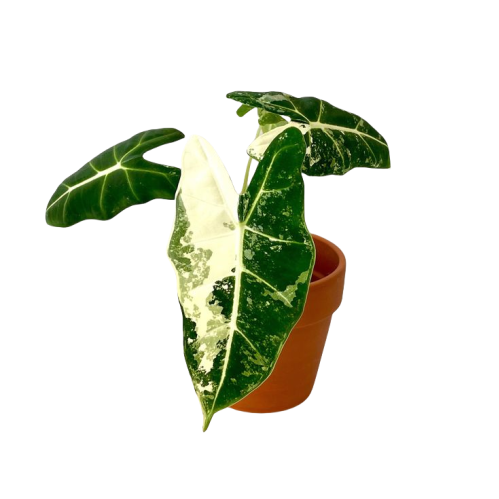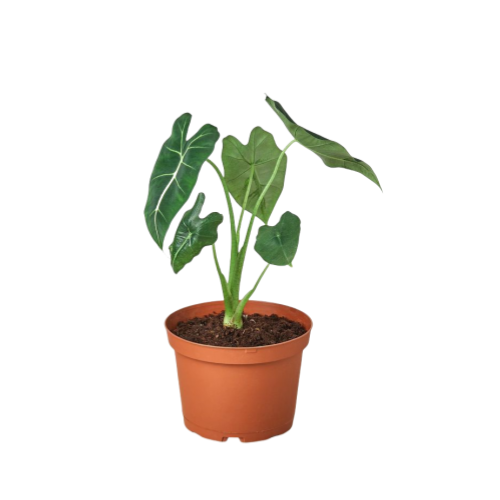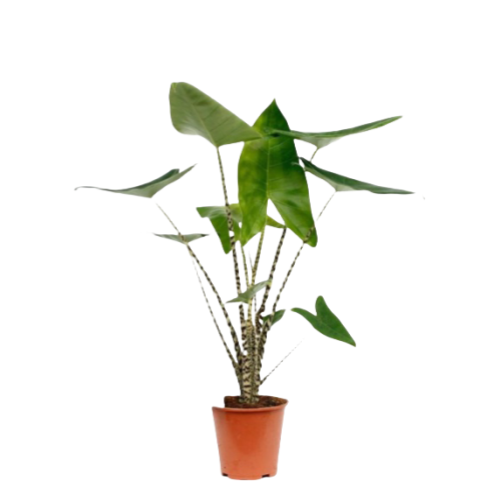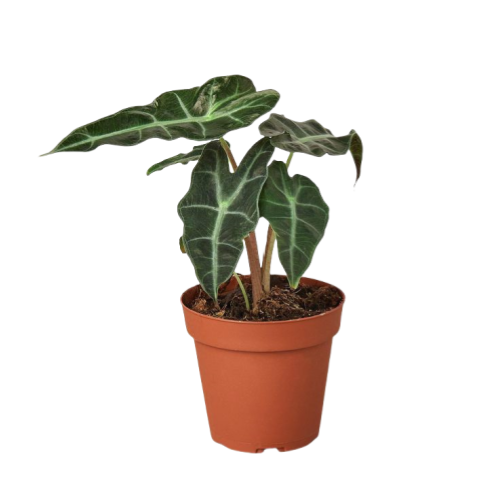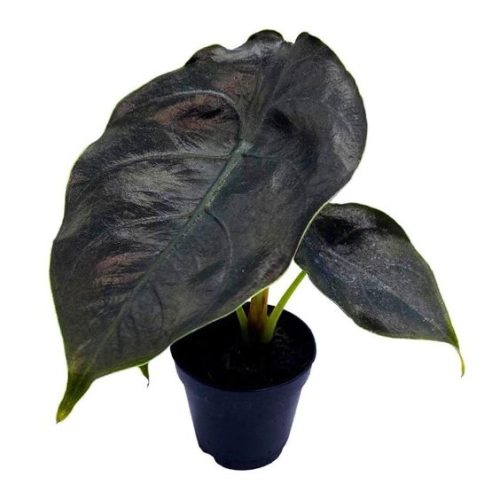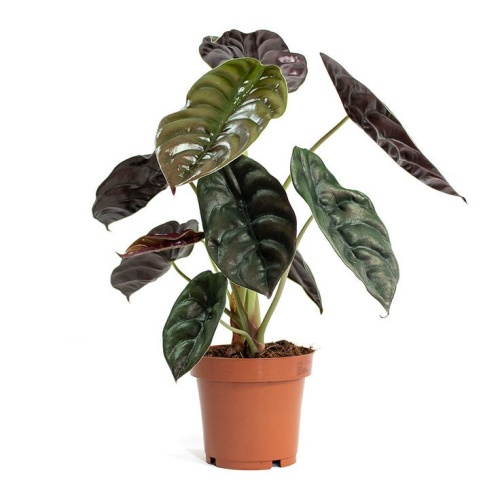Alocasia Stingya
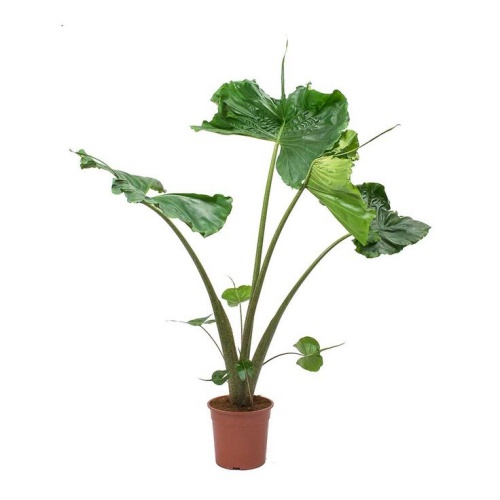
- Botanical Name: Alocasia macrorrhiza ‘Stingray’
- Family Name: Araceae
- Ị ga: 10-30 inches
- Okpomoku: 10-28°C
- Others: Dappled light, high humidity, and moist soil
Nlebazi anya
Nkọwa nke ngwaahịa
Alocasia Stingta: The templical templical nke World Green
Roots of the Rambler – Alocasia Stingray’s Tropical Origins
Alocasia Stingya, a member of the Araceae family, originates from the lush tropical regions of South America. This plant has captured the hearts of botanists and plant enthusiasts worldwide with its distinctive leaf shape and elegant presence. The Alocasia Stingray’s natural habitat is characterized by warm temperatures and high humidity, conditions it thrives in when grown outside its native region. This fern-like plant is not just a pretty face; its large, sculptural leaves provide a dramatic accent in any garden or interior space.
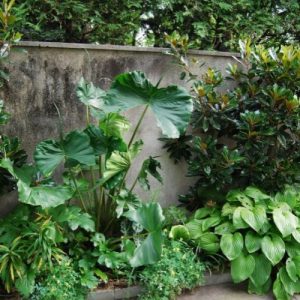
Alocasia Stingya
Chobance Mmasị nke Gonoisseur Calnoisseur
Dịka ezigbo connoisseur na iru mmiri, alocasia na-ekwu na-achọ gburugburu ebe na-eme ka mkpọmkpọ ebe ikuku na-efe efe nke ala ebe okpomọkụ ya. Ọ na-akọcha n'okpuru ìhè anyanwụ, nke na-enweghị isi, nke na-enye ohere ya nnukwu akwụkwọ ya na Photontherntesize n'ụzọ dị irè. The mma iru mmiri maka osisi a dị n'akụkụ dị elu, sitere na 50% ruo 80%, nke na-enyere aka na-aga nke ọma. Okpomọkụ-maara ihe, alocasia na-ekwu na ọ ga-anọ na akụkụ dị mma, yana okpomọkụ nke 10 Celsius C na ezigbo uto nke 18 Celsius C ruo 28 Celsius.
The Stingray Silhouette – Morphological Marvels
The Alocasia Stingray’s most striking feature is its unique leaf shape, which has earned it the name. Its leaves start with a narrow base and extend into a long, pointed tip, much like the wings of a stingray. The broad, trailing lobes that follow the central leaf stalk further the resemblance to the marine creature. The petioles, or leaf stems, display striking brownish patterns that add to the visual appeal of this plant. Capable of growing over 100 centimeters tall, the Alocasia Stingray commands attention in any setting, whether as a statement piece indoors or a tropical accent outdoors.
The Versatile Vegetative Vixen – Adaptable and Enchanting
Alocasia na-ekwu bụ ihe osisi dị iche iche nke karịrị ihe dị ka ụlọ ime ụlọ ma ọ bụ dị ka akụrụngwa n'èzí na-ekpo ọkụ. Ọ na-agbakwunye nke lush, na-enwe mmetụta dị ukwuu na akwa ifuru, ókèala, na ubi osisi, na-eme ka ọ bụrụ ọkacha mmasị ndị na-achọ anya pụrụ iche na uru ịchọ mma dị elu. Osisi a abụghị naanị anya; Ọ na - emekwa ka ọ dị ọcha ikuku, na - eme ka ọnọdụ nke ime ụlọ dị n'ime ya. Alocasia kwuru na ọ bụ ebe a na-eme ihe nkiri na-eweta mmetụ nke ebe ịnya ebe ọ bụla.
Art nke alocasia na-elezi anya
Na-etolite ahụike na iru mmiri na ọkụ
Idobe nke gi Alocasia Stingya‘s leaves from yellowing, create an environment that mimics its tropical origins. Maintain a humid atmosphere by misting, using a humidifier, or placing water dishes around the plant. Ensure it receives bright, indirect light to support photosynthesis without scorching the leaves. Avoid letting the plant sit in soggy soil, which can lead to root rot and yellowing leaves. Water when the top few centimeters of soil begin to dry, and consider using a well-draining soil mix to prevent waterlogged conditions.
Njikwa okpomoku na nguzosi nri
Alocasia na-eme ka obi jupụta na ihu igwe kwụsiri ike n'etiti 18 Celsius C rue 28 Celsius. Ọrịa mberede nwere ike imesi ihe ọkụkụ ahụ, na-eduga akwụkwọ edo edo. Jiri ọkpụkpọ temometa iji debe taabụ na gburugburu ebe obibi. Mgbe ọ na-eri nri, ihe dị mma, mmiri na-agbanye mmiri na-agbakwunye na oge na-eto eto ga-akwado uto siri ike na-enweghị ihe ọghọm nke ọfụma. Ọzọkwa, lelee anya maka pests, dịka ha nwere ike ibute mbibi nke na-eduga na-acha odo odo. Na-enyocha osisi ahụ mgbe niile, ma na-elebara arịa ọrịa ọ bụla anya na-eme ka ọ dị oke njọ.





